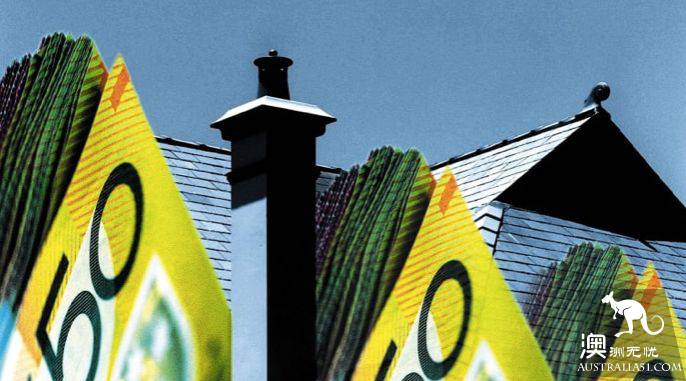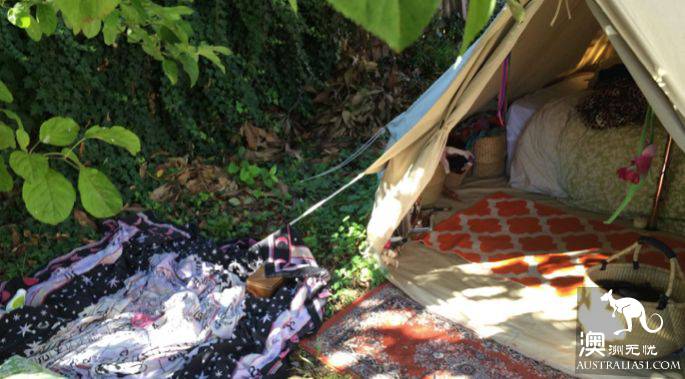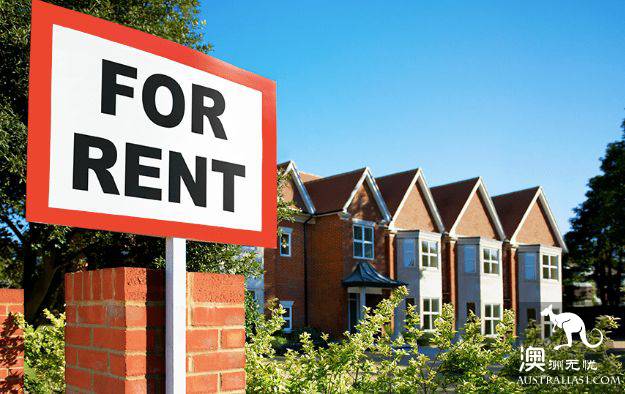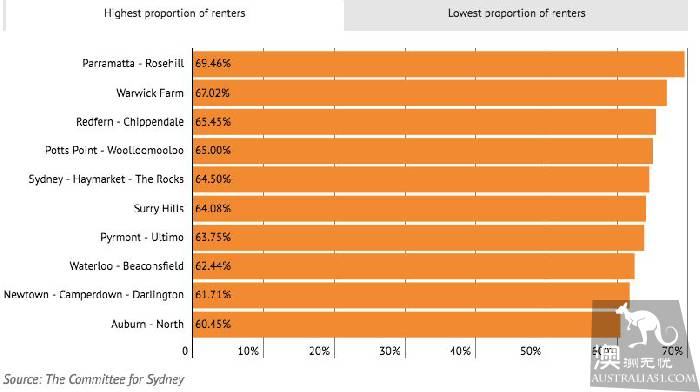preface
In the traditional sense, we tend to think that only those who can`t afford a house will choose to rent a house.
However, the report of the Sydney Commission tells us that renting is an option for more and more wealthy people. With the influx of wealthy tenants, many low-income tenants` space has been ruthlessly crushed!
Traditionally, the investment attribute is only a secondary attribute of the house. However, the Sydney Commission`s report tells us that 42% of Sydney`s community houses are rented more than self-occupied.
Sydney and Melbourne are the two most expensive markets in Australia. Of course, we think that the affordability of these two cities should be the highest in Australia. The reality, however, is that Hobart`s affordability has surpassed Sydney`s.
The conclusion is that reality is always more cruel than imagination!
The ugliness behind the reality of rental housing in Australia: low-income people are the same as homeless

Australian newspapers have been publishing horror stories about the rental market from time to time. However, in the increasingly serious problem of affordability, many people have seen no wonder. For example, someone rented in a tent in the backyard, a large family crowded into a micro-apartment, the rise of capsule apartments, and so on.
Flevell, a 19-year-old girl, currently works as a waitress and part-time model in Melbourne. In Melbourne, where rents are rising, she can only choose to rent a tent in the backyard of a property in Flemington, which she also has to pay A $100 a week.

According to statistics, Sydney and Melbourne are now more expensive than London`s, New York and Los Angeles.
Even the relatively cheap capital cities, Adelaide, Brisbane and Perth, are among the world`s most expensive cities.
Thus, Australia`s rental market has in fact evolved into a terrible crisis. After years of rapid rise, it has become an international joke. For low-income tenants, the situation is undoubtedly worse. At the same time, this group is often easily overlooked by government. "
Canberra is already higher than Sydney in terms of housing costs for low-income tenants, and Hobart is pushing Sydney.
The latest affordability report from Anglicare, an Australian social welfare charity, shows the challenges and problems faced by tenants, especially the low-income population, are growing.
During the preparation of the report, Anglicare conducted a survey of more than 67000 rental properties.
According to the survey, only 485 affordable rental properties are available to tenants who receive "disability benefit (Disability Support Pension)". For single-parent families receiving the New start Allowance (Newstart Allowance), only 180 rental properties are affordable. Pensionable tenants are slightly better, but only 833 rental properties are affordable.
There`s no worst, only worse! The findings show that in Sydney, Canberra, Melbourne and Perth, affordable rental properties are almost zero for those who receive "start-up allowance" (Newstart Allowance) or "youth allowance (Youth Allowance)".
This situation has led many people to despair. The median weekly rent for Sydney apartments has climbed to A $525, compared with A $599 a week for the minimum wage, according to statistics.
"in other words, people who earn the minimum wage usually eat up and down in order to meet the rent; high rents are a big obstacle to getting into town to find a job.
In addition, rents in some remote areas are also rising, resulting in affordability, coupled with difficult employment problems, Australia is unequal, the problem of uneven distribution has become more and more serious.
Against this background, renting is no longer a safe haven for low-income people. According to statistics, more than 30% of tenants are facing varying degrees of rental pressure. Among them, the vast majority of people are facing the security of rental housing. More than half of tenants have concerns that landlords will be blacklisted if they complain. As a result, many tenants choose not to say a word even if they are treated unfairly.

There is no doubt that Australia is experiencing a housing crisis. Australia`s rental situation once again attests to the ugliness of the truth. In Australia, houses are taken for granted as a major investment vehicle; tax rebates, such as tax deductions, have become a driving force behind real estate investments.
In response, the Anglicare called for a more equitable tax system to limit negative deductions and capital gains tax exemptions. Government should increase investment in social security housing and comfortable housing to meet the basic housing needs of low-income people. At the same time, we must reform the leasing law to ensure that the rental market is fair and safe.
If we continue to choose to ignore in the face of ugliness, then it is only ourselves that will end up hurting.
Two has nothing to do with the house, just because of the bag!
More than 40 percent of community tenants in the Greater Sydney region outnumber homeowners, according to (Committee for Sydney), the Sydney Council in Australia, driving tenants in those areas to become a major force in the new state election.
Sydney`s highest percentage of tenants was Parramatta-Rosehill (70%), followed by Warwick Farm (67%).
In addition, many parts of the inner city, including Redfern-Chippendale (65%), Potts Point-Woolloomooloo (65%) and Pyrmont-Ultimo (64%), are on the list of Sydney`s top 10 largest rental communities.

Eamon Waterford, Policy Director of the Sydney Commission, said: "the above data indicate a sharp increase in the number of tenants in Sydney and that Australian political parties cannot ignore the needs of these groups of people. In the new state, housing affordability has risen to a major problem, and the renting generation has become an important electoral force. "
"more and more tenants will seek assistance from government, mainly in terms of policy certainty and tenant protection," Waterford said. In Victoria, for example, increased tenant rights, such as more secure leases and the ability to keep pets, have been extensively discussed as a result of the expansion of the tenant electorate. "
"Sydney`s most economically dynamic areas, such as those that bring together high value-added jobs, tend to be the areas with the highest percentage of tenants," the Sydney committee report said.
According to it, more and more high-paying professionals believe that rather than buying a house in a place far from the place where they go to work, it is better to rent a house near the place of employment, transportation and services than in the area where the facilities are not perfect and far from the place where they go to work.
The report said: "Australia is ushered in the rise of wealthy tenants. This is similar to the trend in the United States. In the United States, for example, the number of rental households earning more than 120 percent of the median income in cities with a population of more than 1 million continues to rise. "
At the same time, more and more people choose to rent a house is not out of necessity, more is a choice.
With the rich joining the renting force, the relatively low-income tenants who originally lived in the inner city had to move to the fringes of the city. In other words, wealthy tenants are increasingly squeezing space for low-income tenants.
According to statistics, 42% of community tenants in the Greater Sydney area currently account for more than 50% of the resident population. By contrast, the lowest percentage of tenants was Woronora Heights (5%), Glenhaven (6%) and Illawong-Alfords Point (7%).


In addition, the Australian Bureau of Statistics 2016 census results, Sydney rental housing proportion has been significantly higher than the rate of home ownership.
The least affordable City for three-Rental Housing-Hobart surpasses Sydney
In June 2018, across Australia, weekly rents were flat at A $429. Weekly rents in capital cities and non-capital regions were flat at A $462 and A $356 respectively.
In terms of capital cities, weekly rents in Sydney and Darwin fell in June 2018, Perth was flat, and other capital cities rose. Sydney`s median weekly rent was the highest in Australia at A $583; it was A $50 higher than Canberra (A $536), the second-most expensive.
Hobart is currently the least affordable capital city in terms of affordability. On the one hand, local households have relatively low incomes; on the other hand, local rents continue to rise.
Over the past year, Hobart`s rents have risen by more than 10%, compared with just 2.0% for households over the same period. Darwin, by contrast, is currently the most affordable capital city.
Sydney is Australia`s second-largest and least affordable rental market, behind Hobart.
Sydney`s median housing price has risen by 51.0% over the past five years. Household income, by contrast, grew by only 16.1% over the same period. Over the past decade, Sydney`s housing growth and income growth were 89% and 42%, respectively.
END
Over the past 20 years, Australia has witnessed the cost of housing from buying to renting.
Twenty years ago, median house prices in Australia`s capital cities were just three-and-a-half times the average annual income of local households. Twenty years later, the price-to-income ratio has jumped to more than eight times, and Sydney has reached a staggering 12 times.
In other words, there are only two possibilities to return to 20-year-old levels. First, house prices fell by more than 60%; second, average income rose by more than 200%. The so-called two possibilities are also just "crazy dreams."
In the past decade alone, home prices in Australia`s capital cities have risen 82 percent, median rents have risen 76 percent, while income has risen only 40 percent over the same period. How many people`s "Australian dream" broke up. Can`t afford to buy a house or a high probability event, can`t afford to rent a house in many people`s view is a small probability event. But the truth is that between 2006 and 2016, the number of people living in Australian rentals rose from 27% to 31%. In other words, one in every three households needs to rent a house.

